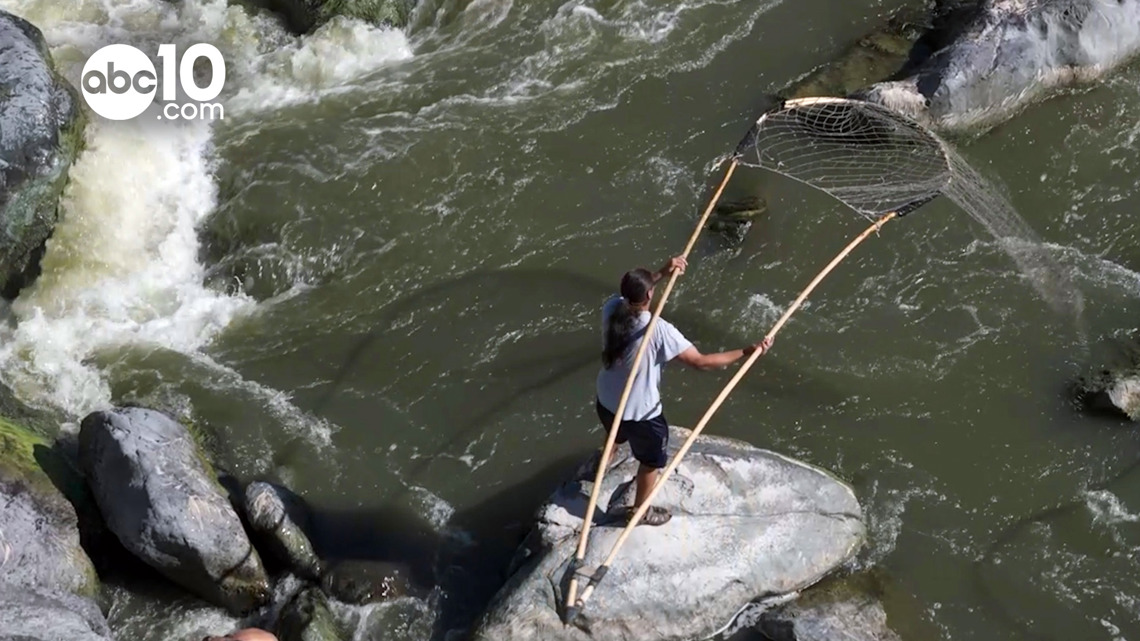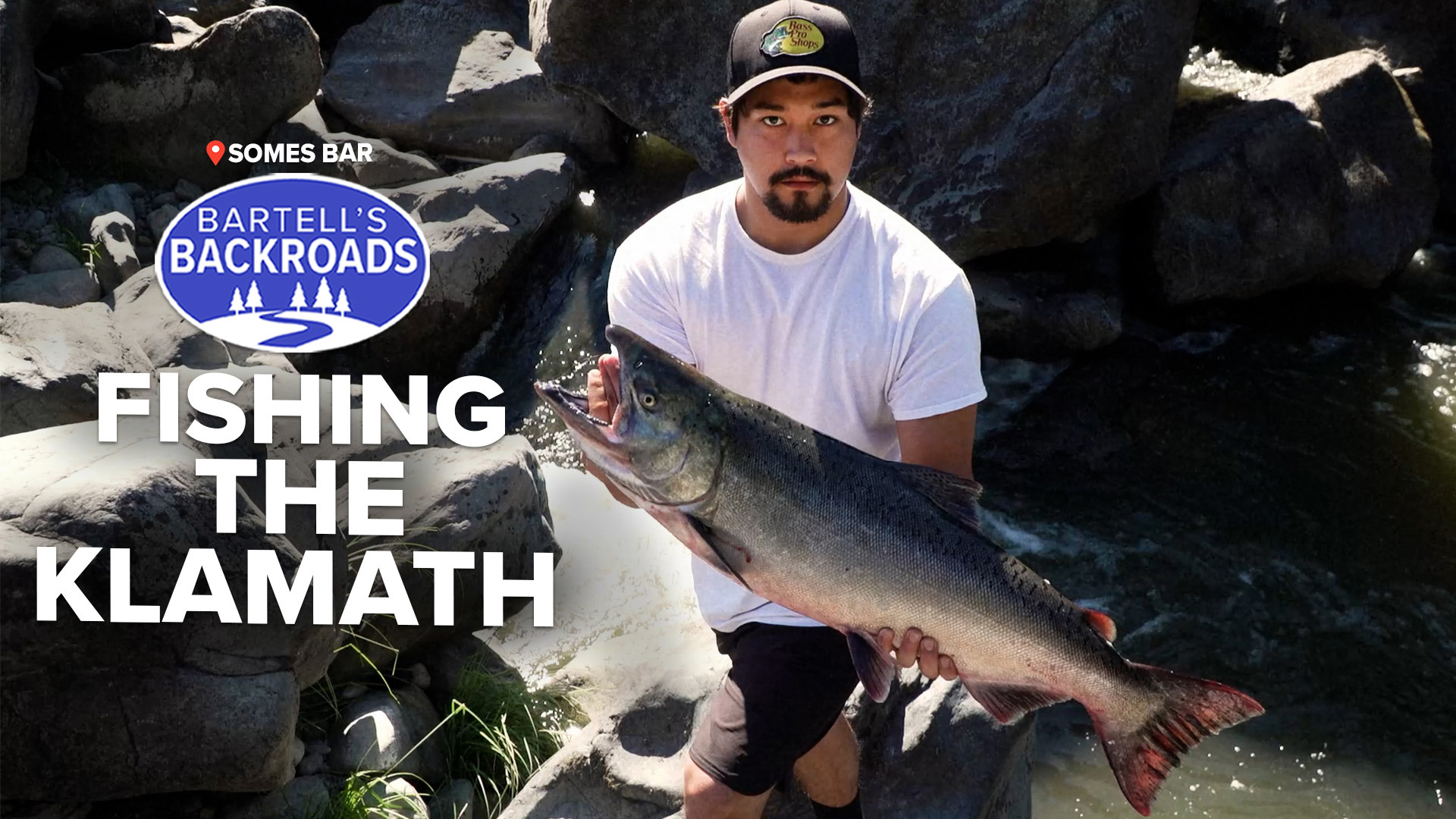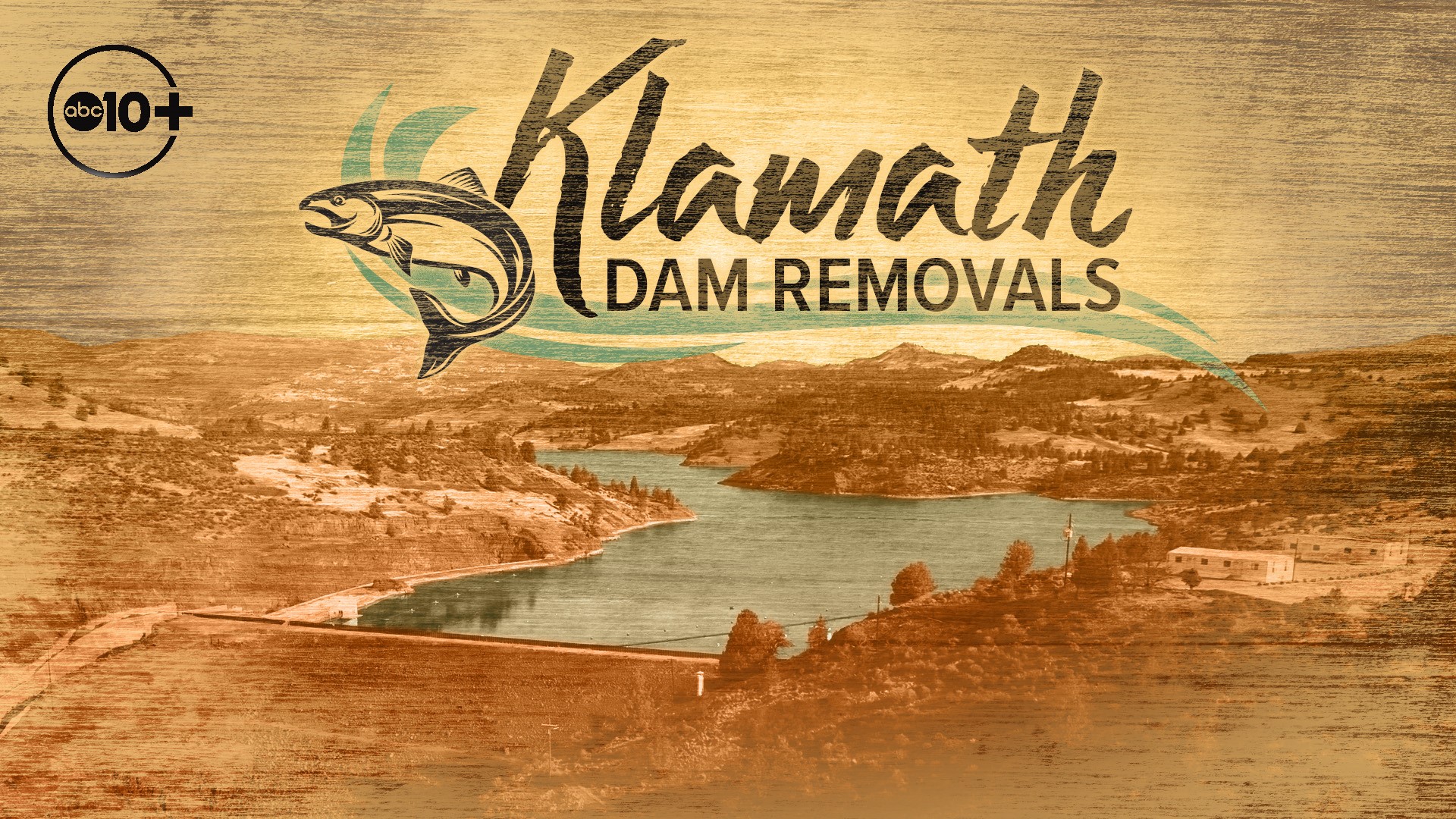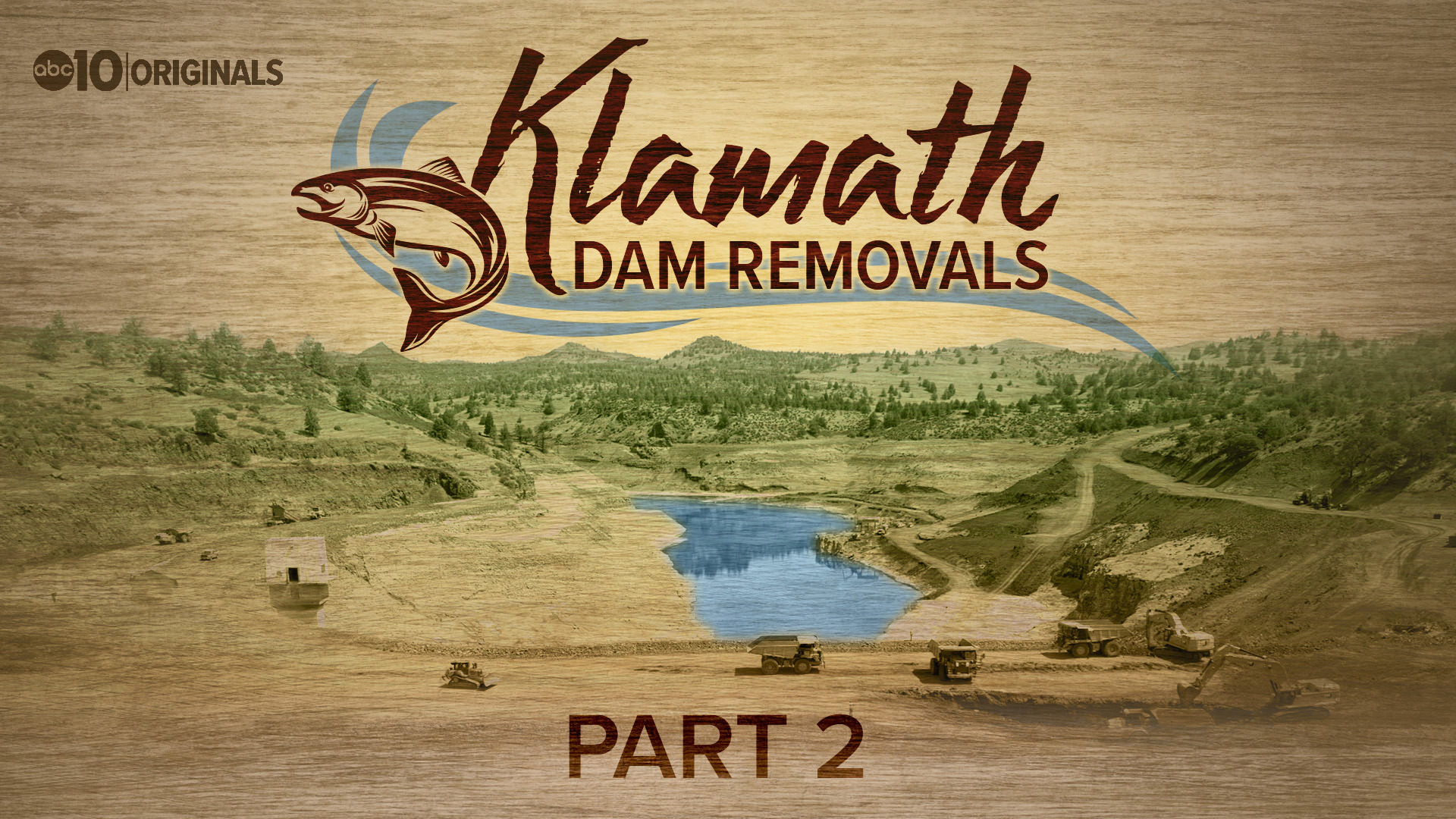SOMES BAR, Calif. — Just before summer's end, the Karuk People make a pilgrimage to the Center of the World by following the fish-filled waters of the Klamath River. The tribe celebrates the World Renewal Ceremony at Ishi-Pishi Falls near the town of Somes Bar, where the salmon run slows just long enough for the ceremony.
“The creator has made it for these fish to show up at this time to feed the people up here doing the ceremony,” said Karuk Tribe Vice Chairman Kenneth Brink. “Everybody that is involved with the ceremonies, the fish we are we find our identity again. We find our spirituality, we find ourselves."
The word Karuk means “Upriver People” and for generations they’ve risked their lives jumping rocks and balancing on wood plank to fish some of the most turbulent waters in the Klamath River. Today, they’re one of the last tribes in California that actively fishes with traditional dip net poles.


Ronald Reed Sr. has fished more World Renewal Ceremonies than he can remember, but this year was one that he won’t forget.
“Coinciding with the World Renewal Ceremony is dam removal on the Klamath,” Reed said.
For the first time in 100 years, salmon can freely swim up the Klamath River. On August 28th, construction crews broke through the fourth and final dam that blocked more than 400 miles of native fish habitat.
“I fought so hard for so long. I feel so accomplished,” Reed said.
He is among the many Indigenous peoples who spent the past 20 years fighting to remove the four dams that caused sickening algae blooms and fish kills downriver.
“One of the big things that we're looking for right now is a rejuvenation, a revitalization of our culture, our people and our society," Reed said.
The Karuk are salmon people--people who fish the way of their elders--but now preserve the future of salmon through science.
“For, I would say, over 20 years, we've been doing scale sampling for aging fish, and we've been doing genetic sampling and disease studies,” Brink said.
The Karuk Tribe has its own fisheries department that collects scientific data on the health of salmon and, although the dams on the Klamath were just removed, Brink said he’s already seeing a change.
“We have way less algae with cooler water. Yes, we do have some sediment in the water because of dam removal, but the fish seem healthy and they're silver. And it's probably the healthiest I’ve ever seen it,” Brink said.
MORE ON THE KLAMATH DAM REMOVALS:
Read here or watch below for John's reports. You can also stream the stories on demand with the ABC10+ app.
Part 1:
Part 2:
ANOTHER FISH TALE FROM THE BACKROADS: The mystery of a High Sierra pond where fish survive even during winter's deep freeze.



